How to love thee analysis To help you compose a written response to poetry, I included student work samples (with their permission) to assist you in developing your writing skills These essays were written by students who had very little experience writing essays on poetry, and in fact, it is the first they ever wroteMay 04, 17 · I love thee to the level of every day's Most quiet need, by sun and candlelight I love thee freely, as men strive for right I love thee purely, as they turn from praise I love thee with the passion put to use In my old griefs, and with my childhood's faith I love thee with a love I seemed to lose With my lost saints I love thee withAug 28, 19 · I love thee to the depth and breadth and height My soul can reach, when feeling out of sight For the ends of being and ideal grace I love thee to the level of every day's Most quiet need, by sun and candlelight I love thee freely, as men strive for right;
Ks4 Poetry Barrett Browning Elizabeth Sonnet 43 Teachit English
How do i love thee poem analysis pdf
How do i love thee poem analysis pdf-Analysis How do I love thee?It is a force for good, consciously given because it feels like the right thing to do She doesn't want any thanks for this freely given love;




25 Pocket Poems Ideas Poems Poetry Words
Let me count the ways She then uses the last thirteen lines of the poem to show just how much she loves her husband Lines 24 of Sonnet 43 provide the first way in which the speaker loves her husband Barrett Browning writes, I love thee to the depth and breadth and height My soul can reach, when feeling out of sightElizabeth Barrett Browning, Romantic poetry, Printable poem, Instant download, How Do I Love Thee?, Love poem, Romanticism, Lovers gift, Digital poetry, Instant gift, Poetic wall art, Literature poster, Instant poetry This is an instantly printable hand typed download of the poem How Do I LoveI love thee freely, as men strive for Right, • I love thee purely, as they turn from Praise;
I love thee freely, as men strive for right I love thee purely, as they turn from praise I love thee with the passion put to use In my old griefs, and with my childhood's faith I love thee with a love I seemed to lose With my lost saints I love thee with the breath, Smiles, tears, of all my life;Dec 11, 14 · How do I love Thee?(Sonnet43) "How do I Love Thee?" is undoubtedly a simple poem with a deep hidden meaning Love is eternal, unconquerable and the highest power in the world Elizabeth loves her husbandtobe on a daily basis instead of loving him for a few passionate moments Her love is not a slave to momentary passion and this is proved because she is in loveLet me count the ways!
I love thee to the depth and breadth and height My soul can reach, when feeling out of sight For the ends of being and ideal grace I love thee to the level of every day's Most quiet need, by sun and candlelight I love thee freely, as men strive for right;Feb 09, 19 · In the redescription of love, a greater understanding of it exists Of course, the major theme of this poem is love The poet is talking about the emotion of love and she is exploring theHow do i love thee poem translation 1How do I love thee?




An Analysis Of How Do I Love Thee By Elizabeth Barret Browning One Of The World S Most Famous Love Poems Brighthub Education




Elizabeth Barrett Browning Wikipedia
Let me count the ways The poem starts out with a rhetorical question, which draws the reader in immediately to the focus of the poem Browning then offers the answer to her own question, and begins on the description of8 I love thee purely, as they turn from praiseHow Do I Love Thee?
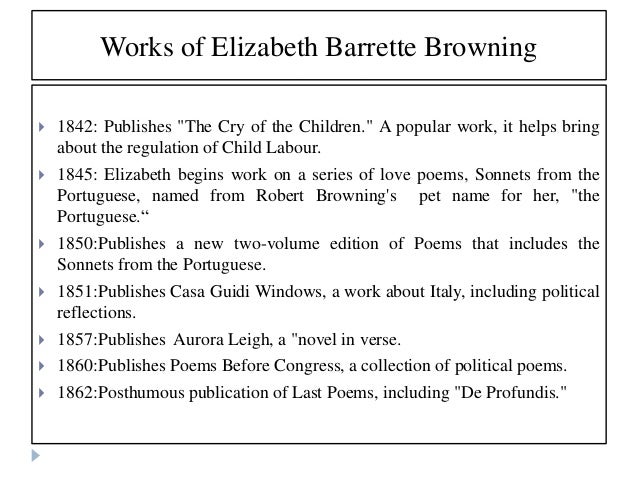



Sonnet 43 How Do I Love Thee By Elizabeth Barrette Browning



Analysis Of How Do I Love Thee By Elizabeth Barret Browning Gcse English Marked By Teachers Com
" from the Sonnets from the Portuguese XLIII is a Petrarchan sonnet of fourteen lines, consisting of an octave and a sestet It was written by Elizabeth Barrett Browning () in 1845 and was composed for her husband, the renowned Romantic poet, Robert BrowningOct 26, 18 · Last Updated on October 26, 18, by eNotes Editorial Word Count 517 It is a mark of Barrett Browning's skill that the repetition of the phrase "I love thee"—nine times in a poemFeb 05, 17 · Her love is unconditional and therefore free;




How Do I Love Thee Documents Course Hero



Analysis Of Sonnet 43 How Do I Love Thee By Elizabeth Barrett Browning Gcse English Marked By Teachers Com
I love thee purely, as they turn from praise I love thee with the passion put to use(f) Analysis To learn how to do your own analysis of "How do I Love Thee" and other famous love poems, read these instructions on how to do a poetry analysis Elizabeth Barret Browning's Sonnets from the Portuguese contains several famous love poems This is the most famous The poem is a sonnet, a 14line poem written in iambic pentameterI love thee to the depth and breadth and height My soul can reach, when feeling out of sight For the ends of Being and ideal Grace I love thee to the level of everyday's Most quiet need, by sun and candlelight I love thee freely, as men strive for Right;




How Do I Love Thee Let Me Count The Ways Sonnets From The Portuguese 43 Poem Summary And Analysis Litcharts



Analysis Of Sonnet 43 How Do I Love Thee By Elizabeth Barrett Browning Gcse English Marked By Teachers Com
How do I love thee?The poem "How Do l Love Thee" is an ideal love To be loved is to have a sexual passion for someone, to have unconditional love for someone, or that nurturing love between family members Some poems fall short of my idea of love they are flawed and don't measure up to love"I Think of Thee" is a sonnet written by the English Victorian poet Elizabeth Barrett Browning Barrett Browning wrote the poem, along with the other sonnets published in her collection Sonnets from the Portuguese, during her courtship with the equally famous English Victorian poet Robert Barrett Browning from The poem expresses the speaker's desire to see and be



Ks4 Poetry Barrett Browning Elizabeth Sonnet 43 Teachit English




How Do I Love Thee Sonnet 43 National Poetry Day
Let me count the ways I love thee to the depth and breadth and height My soul can reach, when feeling out of sight For the ends of being and ideal grace I love thee to the level of every day's Most quiet need, by sun and candlelightLet Me Count the Ways" to explore the literary concept of rhyme through guided annotation, literary analysis (via short answer and essay assignments), and a creative poemwriting activityAnd, if God choose, I shall but love thee better after death




Pdf How Do I Love Thee Let Me Count The Words The Social Effects Of Expressive Writing
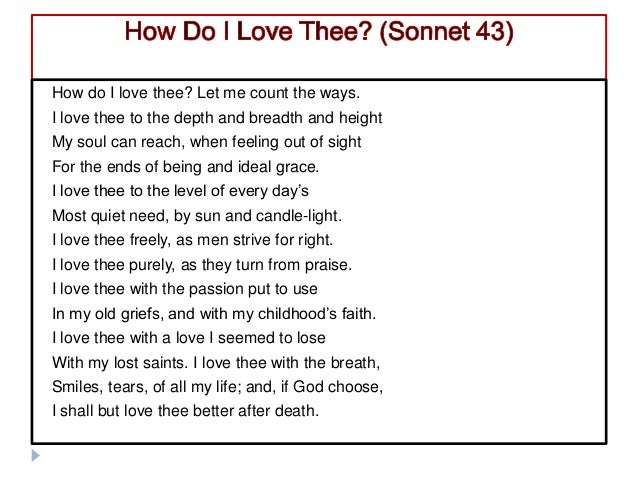



Sonnet 43 How Do I Love Thee By Elizabeth Barrette Browning
I love thee freely, as men strive for right I love thee purely, as they turn from praise I love thee with the passion put to use In my old griefs, and with my childhood's faith I love thee with a love I seemed to lose With my lost saints I love thee with the breath, Smiles, tears, of all my life;It is a humble kind of love, untainted by the ego How Do I Love Thee?And, if God choose, I shall but love thee
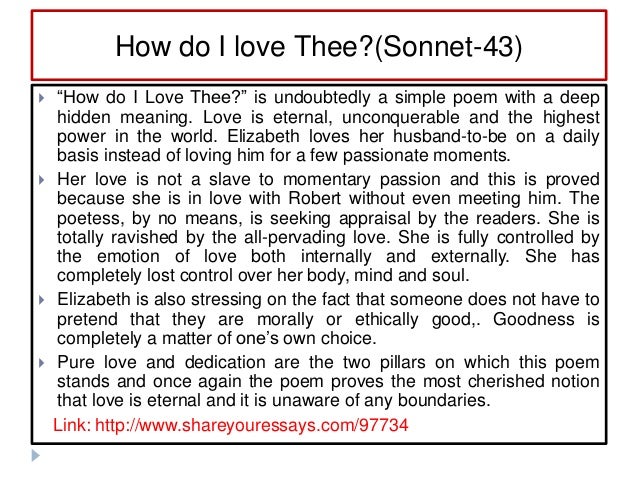



Sonnet 43 How Do I Love Thee By Elizabeth Barrette Browning




The Analysis Of Poem How Do I Love Thee Let Me Count The Ways A Cup Of Hot Chocolate
'A Red, Red Rose' by Robert Burns is a poem that is in the ballad formation of fourline stanzas with ABBA rhyme schemes, and that format automatically links the reader to concepts of love and emotionWith the addition of metaphors and similes that describe the narrator's affection and the woman who holds that affection, the narrator attempts throughout the lines to express the depthJun 09, 13 · 43, also known as "How Do I Love Thee" is a literary classic written by Elizabeth Barrett Browning in 1850This poem follows a Petrarch sonnet structure, even though she lived closer to Shakespear's time This poem explores all the ways the author loves someone, it even goes through almost all stages of life Her love is talked about on an everyday level, as well as onThe poems opposing slavery include "The Runaway Slave at Pilgrim's Point" and "A Curse for a Nation";




Sonnet 43 Elizabeth Barrett Browning Pdf Sonnets From The Portuguese 43 How Do I Love Thee Let Me Count The Ways



Analysis Of How Do I Love Thee By Elizabeth Barret Browning Gcse English Marked By Teachers Com
Let me count the ways2I love thee to the depth and breadth and height3My soul can reach, when feeling out of sight4For the ends of being and ideal grace5I love thee to the level of every day's6Most quiet need, by sun and candlelight7I love thee freely, as men strive for right;8IDec 14, · "How Do I Love Thee?" Analysis Chart Literary Elements Example from Poem Significance to Poem or Impact on Poem Simile "I love thee purely, as men strive for right" This is the contrast between the love of liberty and men doing the right thing Repetition "I love thee" Elizabeth Barrett Browning says that she's going to count the reasons she "loves thee" to showLet me count the ways 2 I love thee to the depth and breadth and height 3 My soul can reach, when feeling out of sight 4 For the ends of being and ideal grace 5 I love thee to the level of every day's 6 Most quiet need, by sun and candlelight 7 I love thee freely, as men strive for right;




How Do I Love Thee Sonnet 43 National Poetry Day




How Do I Love Thee Let Me Count The Ways Sonnets From The Portuguese 43 Poem Summary And Analysis Litcharts
Mar 24, 21 · The poem "How Do I Love Thee?" is Sonnet 43 The deception was soon uncovered, and Barrett Browning's sonnet sequence became revered, second only to Shakespeare's, in English literary history Similar Poetry of Sonnet 43 Analysis Readers who enjoyed reading this poem will also find interesting to read the following list of poemsDo I Love Thee Poem Analysis 781 Words4 Pages How Do I Love Thee – Elizabeth Barrett Browning interprets the meaning, tone, and overall effect of a poem How Do I Love Thee by Elizabeth Barret Browning is an iconic and powerful love poem The work is part of Sonnets from the Portuguese, a collection of poems that Elizabeth Browning wrote for her husband, poetLove thee purely, as they turn from praise I love thee with the passion put to use In my old griefs, and with my childhood's faith I love thee with a love I seemed to lose With my lost saints I love thee with the breath, Smiles, tears, of all my life;




Sonnet 43 How Do I Love Thee By Elizabeth Barrett Browning Smile Analysis Points Teaching Resources



How Do I Love Thee Sonnet 43 National Poetry Day
Tone of the poem as deeply personal and directs the sentiments it carries at her husband The phrase 'I love thee' is repeated for emphasis throughout the poem When used at the start of lines in a stanza it is known as anaphora It gives the poem a prayer like quality and matches the emotions that Browning is expressingAnd, if God choose, I shall but love thee better after death ReadWorksorg How Do I Love Thee?• How do I love thee?




Ppt Elizabeth Barrett Browning Powerpoint Presentation Free Download Id



Comparison Of How Do I Love Thee By Elizabeth Barrett Browning And A Birthday Written By Christina Rosetti Gcse English Marked By Teachers Com
(Sonnet 43) By Elizabeth Barrett Browning How do I love thee?I love thee to the level of every day's Most quiet need, by sun and candlelight I love thee freely, as men strive for right I love thee purely, as they turn from praise I love thee with the passion put to use In my old griefs, and with my childhood's faith I love thee with a love ILines 914 Lines 9 14 The sestet starts at line nine




Sonnet 43 How Do I Love Thee By Elizabeth Barrette Browning
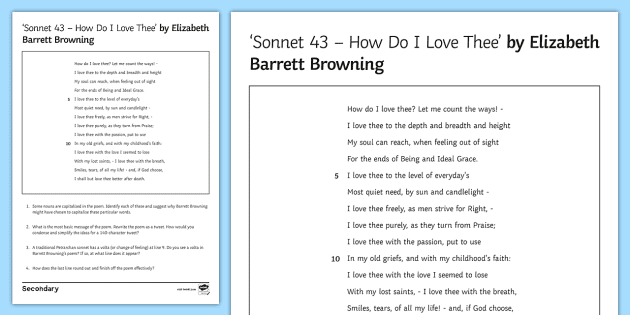



Gcse Sonnet 43 How Do I Love Thee By Elizabeth Barrett Browning Poem And
Say thou dost love me, love me, love me—toll The silver iterance!—only minding, Dear, To love me also in silence with thy soul This poem is in the public domain Born in 1806 at Coxhoe Hall, Durham, England, Elizabeth Barrett Browning was a celebrated English poet ofThe poem "How Do I Love Thee?Dec 05, 19 · The poem "How Do I Love Thee?




How Do I Love Thee Summary In Hindi Youtube




Where In This Poem Does Anaphora Occur A Lines 1 2 3 4 And 6 B Lines 2 4 6 7 13 Course Hero
Learn how the choice of words and phrases in a poem impacts the overall meaning and tone In this interactive tutorial you'll examine Sonnet 43, "How Do I Love Thee?" by Elizabeth Barrett Browning and engage in a critical analysis of the language, reflect on your own interpretations, and write about what you have learnedLet me count the ways I love thee to the depth and breadth and height My soul can reach, when feeling out of sight For the ends of Being and ideal Grace I love thee to the level of every day's Most quiet need, by sun and candlelight I love thee freely, as men strive for Right;And, if God choose, I shall but love thee




How Do I Love Thee Sonnets Poetry




Analysing Elizabeth Barrett Browning S Sonnet 43 Part One Dystopiajunkie Analysis Youtube
I love thee freely, as men strive for right I love thee purely, as they turn from praise I love thee with the passion put to use In my old griefs, and with my childhood's faith I love thee with a love I seemed to lose With my lost saints I love thee with the breath, Smiles, tears, of all my life;Apr 24, · This poem, in particular, is among the best known of Browning's verses and considered by many to be one of the most famous love poems in the English language "Sonnet 43" is a love poem written from the perspective of a woman to her lover It is written in iambic pentameter and follows the Italian sonnet tradition in the style of PetrarchThis versatile poetry resource uses Elizabeth Barrett Browning's "How Do I Love Thee?




How Do I Love Thee By Elizabeth Barrett Browning Quick Picture Analysis




Pdf How Do I Love Thee Let Me Count The Js Implicit Egotism And Interpersonal Attraction
I love thee purely, as they turn from PraiseJul 30, 16 · How do I love thee?• I love thee with the breath, Smiles, tears, of all my life!




By Elizabeth Barret Browning Ppt Download
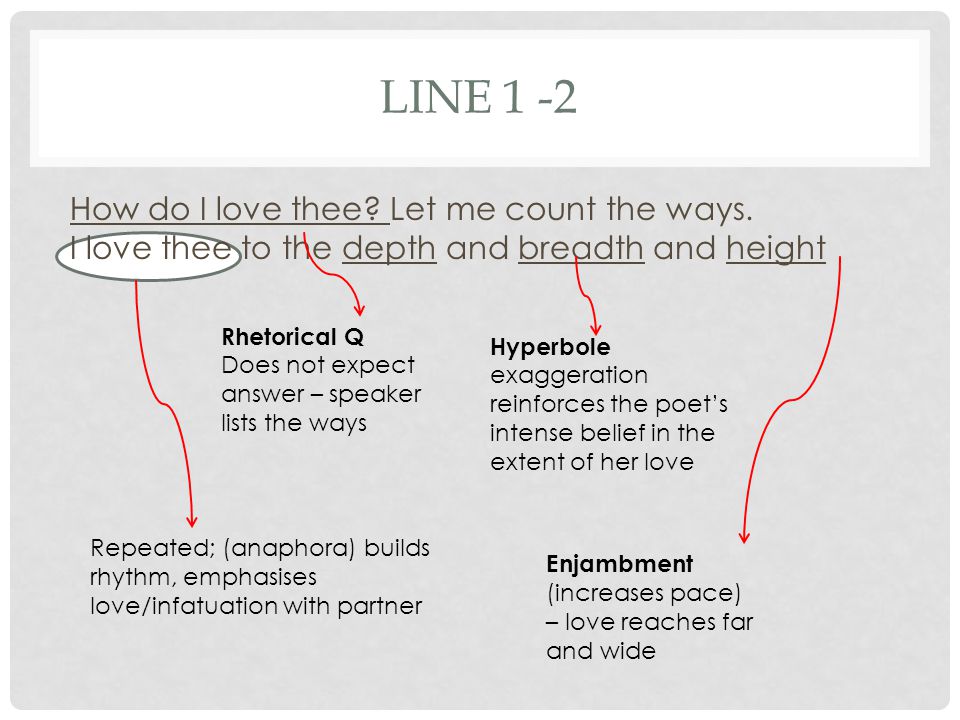



By Elizabeth Barret Browning Ppt Download
" from the Sonnets from the Portuguese XLIII is a Petrarchan sonnet of fourteen lines, consisting of an Victorian Poetry The Prelude is a long autobiographical poem, and it describes the poet's love of nature and the world around himLet me count the ways I love thee to the depth and breadth and height My soul can reach, when feeling out of sight For the ends of being and ideal grace I love thee to the level of every day's Most quiet need, by sun and candlelight• I shall but love thee better after death Made up of í lines and a regular but flexible rhyme scheme The word love is repeated for
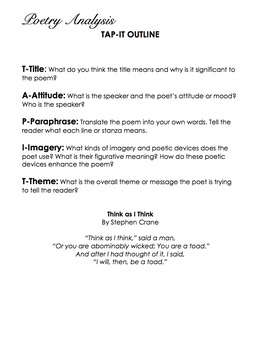



How Do I Love Thee By Elizabeth Barrett Browning Questions Analysis Writing



Ks4 Poetry Barrett Browning Elizabeth Sonnet 43 Teachit English
Oct 24, 17 · "How do I love thee" by Elizabeth Barrett Browning, explores the ideas of the greatness of love, yet "Remember" by Christina Rossetti explores the ideas of love, loss and grief altogether Both these poems are from the 19th century, though are still widely read and used for different occasions todayWith the breath, (f) Smiles, tears, of all my life!In the poem "How do I Love Thee", Elizabeth Barret Browning expresses her everlasting nature of love and its power to overcome all, including death In the introduction of the poem Line 1 starts off and captures the reader's attention It asks the simple question, "How do I Love Thee?" Throughout the rest of the poem repetition occurs
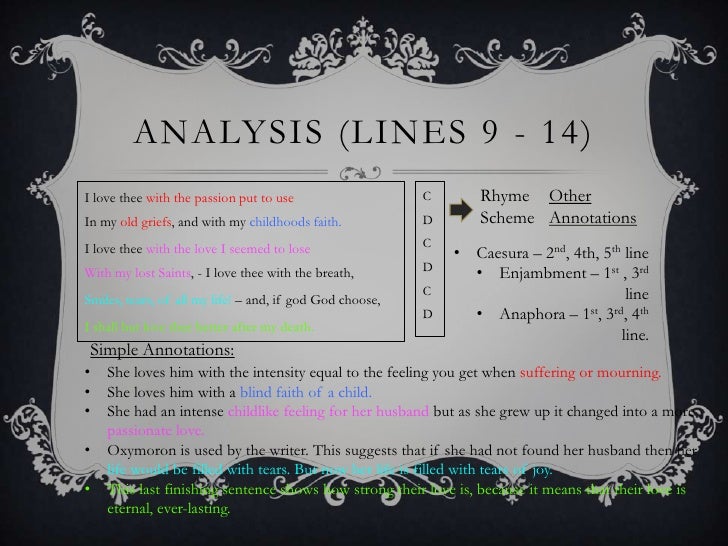



Sonnet 43 1




How Do I Love Thee By Elizabeth Barrett Browning Quick Picture Analysis
1 How do I love thee?And, if God choose, I shall but love thee better after deathIn the first she describes the experience of a slave woman who is whipped, raped, and made pregnant as she curses the slavers She wwwPoemHuntercom The World's Poetry
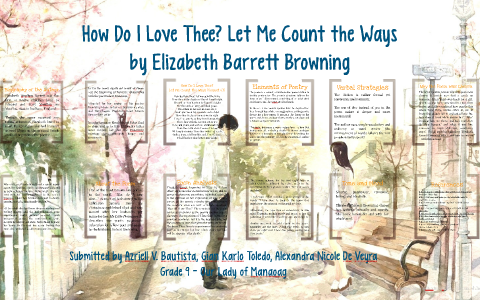



How Do I Love Thee By Elizabeth Barrett Browning By Len Toi




How To Analyze A Shakespearean Sonnet
And, if God choose, (e) I shall but love thee better after death (f) Analysis To learn how to do your own analysis of "How do I Love Thee" and other famous love poems, read these instructions on how to do a poetry analysis Elizabeth Barret Browning's Sonnets from the(f) Analysis To learn how to do your own analysis of "How do I Love Thee" and other famous love poems, read these instructions on how to do a poetry analysis Elizabeth Barret Browning's Sonnets from the Portuguese contains several famous love poemsFeb 04, 17 · I love thee freely, as men strive for right I love thee purely, as they turn from praise I love thee with the passion put to use In my old griefs, and with my childhood's faith I love thee with a love I seemed to lose With my lost saints I love thee with the breath, Smiles, tears, of all my life;



Poem Tpcastt Elizabeth Barrett Browning




How Do I Love Thee Sonnet 43 Answers Pdf Readworks Org How Do I Love Thee Sonnet 43 Teacher Guide Answers Passage Reading Level Lexile Non Prose The Course Hero
May 03, 11 · Poem Analysis In How do I love thee by Elizabeth Barrett Browning I believe that the person talking is professing about a kind of love that can stand the test of time You know that kind of love Every day and moment is cherished by both Each person knows almost everything about each other and they have been together for what would seem like foreverJan 08, 18 · How do I Love Thee Analysis Essay 441 Words 2 Pages The poem, 'How do I love thee' is an iambic pentameter poem, starting with an unaccented syllable, and then an accented syllable This is also a lyric poem as it contains a lot of emotion, sparks the readers imagination, and has a melody like that of an epigram or hymnI love thee purely, as they turn from praise
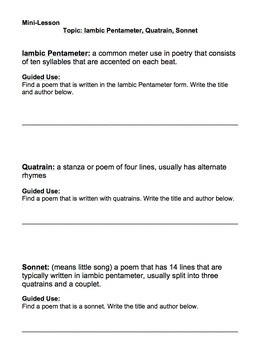



How Do I Love Thee By Elizabeth Barrett Browning Questions Analysis Writing
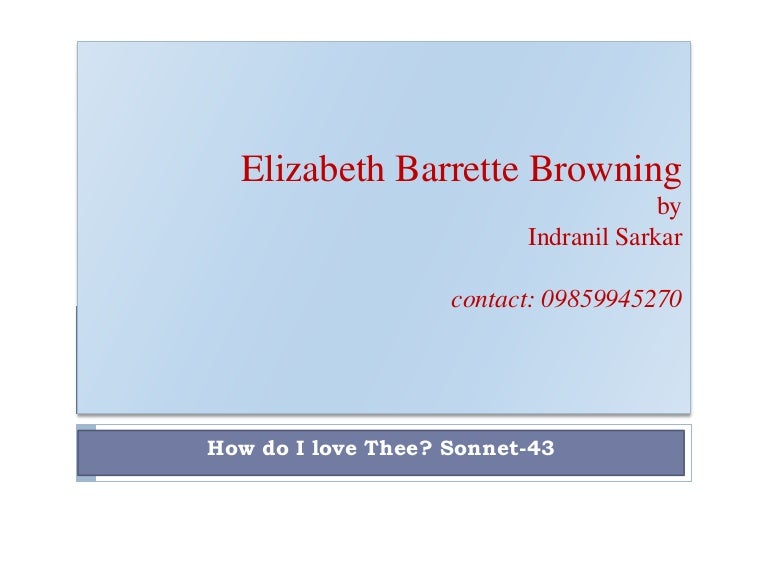



Sonnet 43 How Do I Love Thee By Elizabeth Barrette Browning
How do i love thee let me count the ways poem analysis How do I love thee?




If Thou Must Love Me Let It Be For Nought Sonnets From The Portuguese 14 Poem Summary And Analysis Litcharts




Sonnet 43 How Do I Love Thee Let Me Count Poem Analysis



Sonnet 29 I Think Of Thee Meaning And Interpretation




Pin On Poetry




Sonnet 43 From The Portuguese By Elizabeth Barrett Browning Ppt Download




Sonnet 141 Wikipedia




25 How Do I Love Thee Ideas Elizabeth Barrett Browning Elizabeth Barrett My Love




An Analysis Of How Do I Love Thee By Elizabeth Barret Browning One Of The World S Most Famous Love Poems Brighthub Education




Analysis Of Poem How Do I Love Thee By Elizabeth Barrett Browning Owlcation
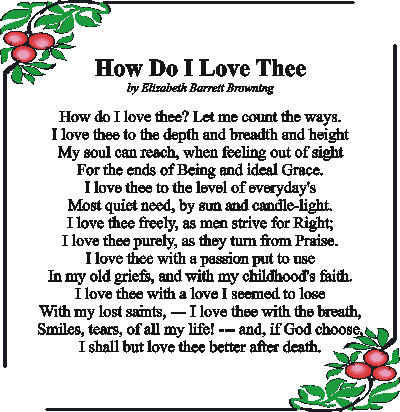



Analysis Of How Do I Love Thee By Elizabeth Barrett Browning Beaming Notes




Analysis Of Poem How Do I Love Thee Youtube




Where In This Poem Does Anaphora Occur A Lines 1 2 3 4 And 6 B Lines 2 4 6 7 13 Course Hero
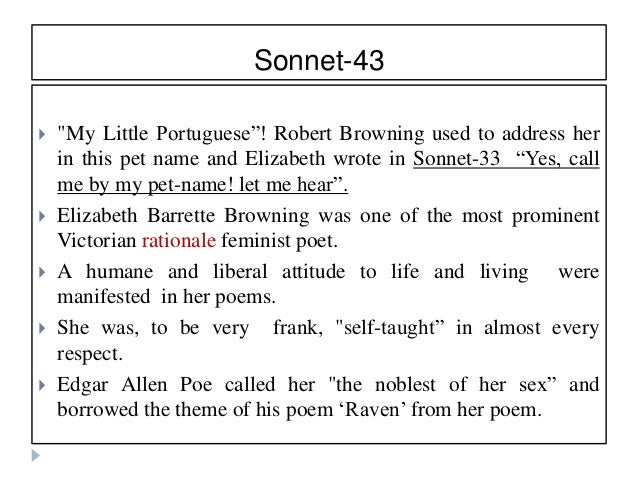



Sonnet 43 How Do I Love Thee By Elizabeth Barrette Browning




25 Pocket Poems Ideas Poems Poetry Words




How Do I Love Thee
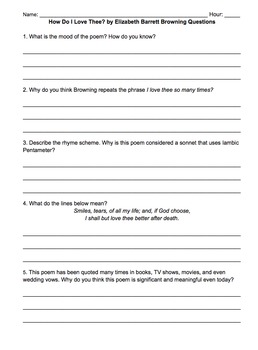



How Do I Love Thee By Elizabeth Barrett Browning Questions Analysis Writing




A Short Analysis Of Elizabeth Barrett Browning S How Do I Love Thee Let Me Count The Ways Interesting Literature




How Do I Love Thee Sonnet 43 By Elizabeth Barrett Browning Poems For Children Freeschool Youtube




Elizabeth Barrett Browning And The Sonnet Strawberry Moon




Ppt Elizabeth Barrett Browning Powerpoint Presentation Free Download Id



Comparison Of How Do I Love Thee By Elizabeth Barrett Browning And A Birthday Written By Christina Rosetti Gcse English Marked By Teachers Com
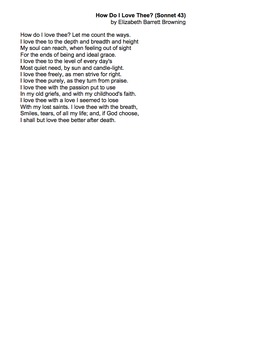



How Do I Love Thee By Elizabeth Barrett Browning Questions Analysis Writing




How Do I Love Thee Analysis How Do I Love Thee Analysis Chart Literary Elements Example From Poem Significance To Poem Or Impact On Poem Simile I Course Hero




Doc How Do I Love Thee Luana Ivan Academia Edu



Analysis Of Sonnet 43 How Do I Love Thee By Elizabeth Barrett Browning Gcse English Marked By Teachers Com



Analysis Of Sonnet 43 How Do I Love Thee By Elizabeth Barrett Browning Gcse English Marked By Teachers Com




Sonnet 43 How Do I Love Thee By Elizabeth Barrette Browning




Departure From Form Of Shakespearean Sonnet I Love Thee To The Depth And Course Hero




How Do I Love Thee Let Me Count The Ways Sonnets From The Portuguese 43 Poem Summary And Analysis Litcharts




How Do I Love Thee Wikipedia
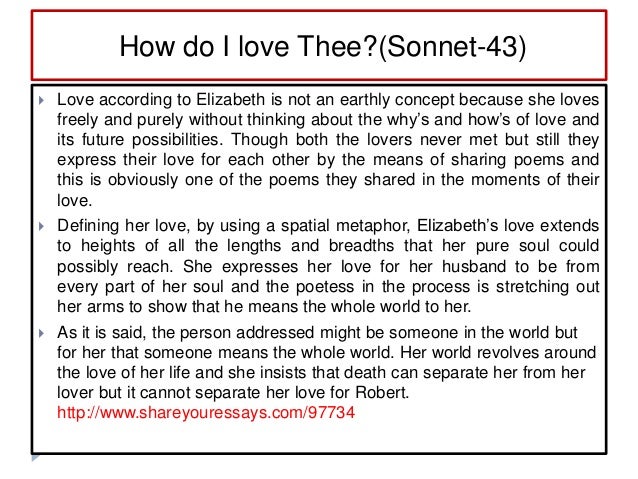



Sonnet 43 How Do I Love Thee By Elizabeth Barrette Browning




Pin On Love Quotes Poetry




Sonnet 43 How Do I Love Thee Elizabeth Barrett Browning Teaching Resources




04 05 Love Of A Wife How Do I Love Thee Literary Elements Example From Poem Significance To Poem Or Impact On Poem Simile I Love Thee Course Hero




How Do I Love Thee By Elizabeth Barrett Browning Quick Picture Analysis




I Love Thee To The Depth And Breadth And Height My Soul Can Reach When Feeling Course Hero




How Do I Love Thee Sonnet 43 National Poetry Day
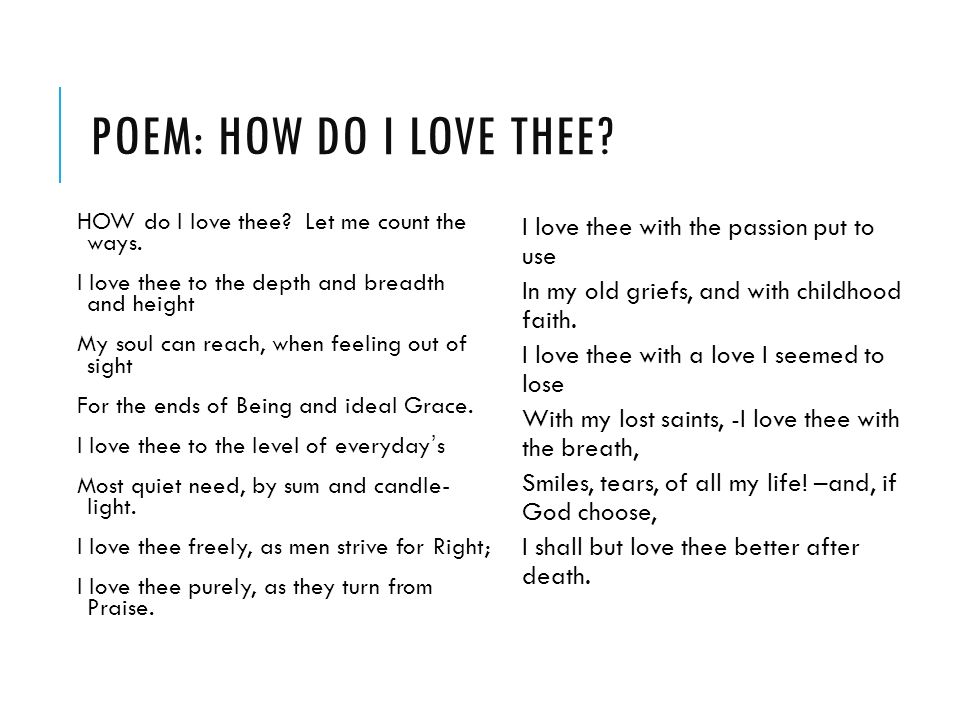



Elizabeth Barrett Browning Ppt Video Online Download




Sonnets From The Portuguese Wikipedia



Analysis Of How Do I Love Thee By Elizabeth Barret Browning Gcse English Marked By Teachers Com




Pdf Analysis Of Love Poetry Throughout The Ages Robert Peat Academia Edu




How Do I Love Thee Docx Sonnets Robert Browning




How Do I Love Thee Docx Sonnets Robert Browning




Doc How Do I Love Thee Emz Asierto Academia Edu




How Do I Love Thee By E B Browning Translation Analysis Bengali Lecture Prc Foundation Youtube
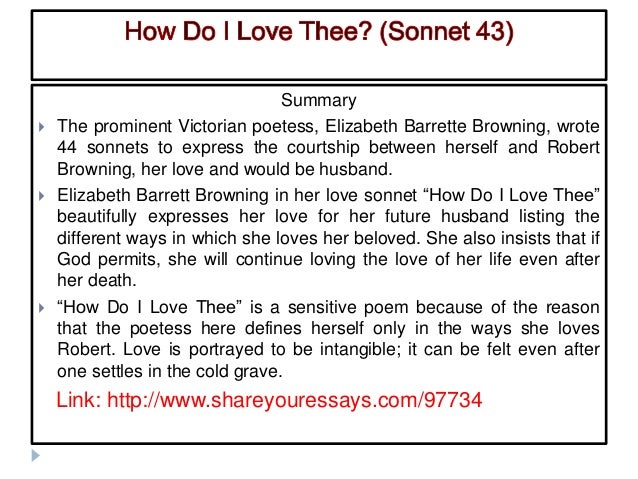



Sonnet 43 How Do I Love Thee By Elizabeth Barrette Browning



Analysis Of How Do I Love Thee By Elizabeth Barret Browning Gcse English Marked By Teachers Com
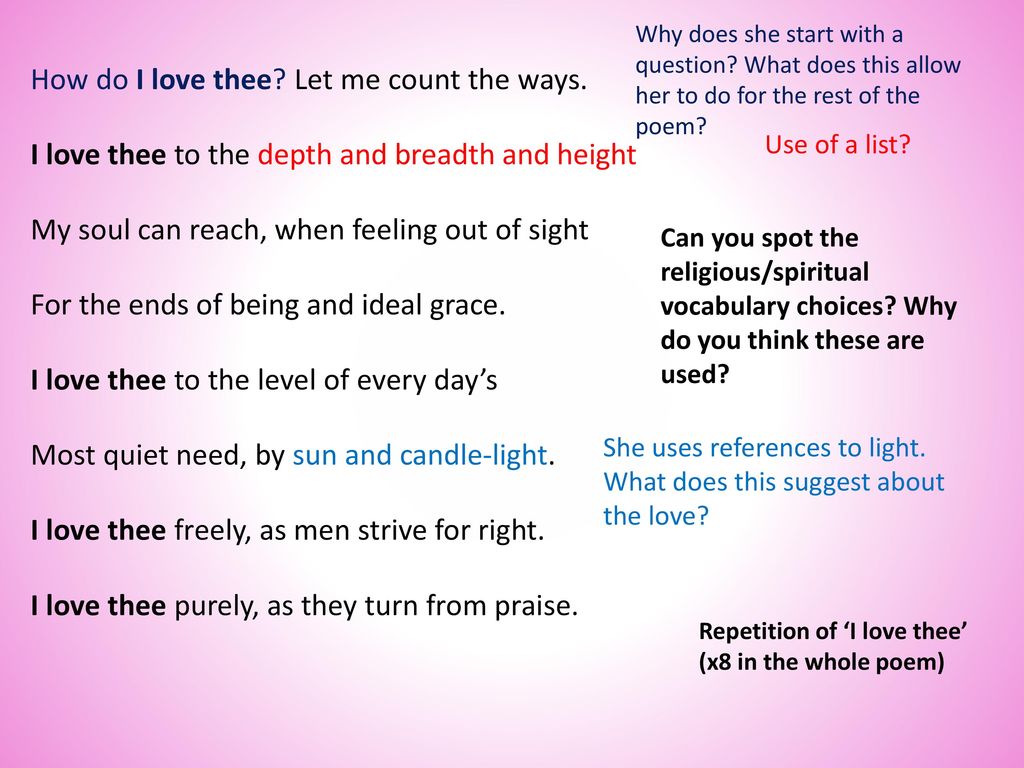



Sonnet 43 Elizabeth Barrett Browning Ppt Download
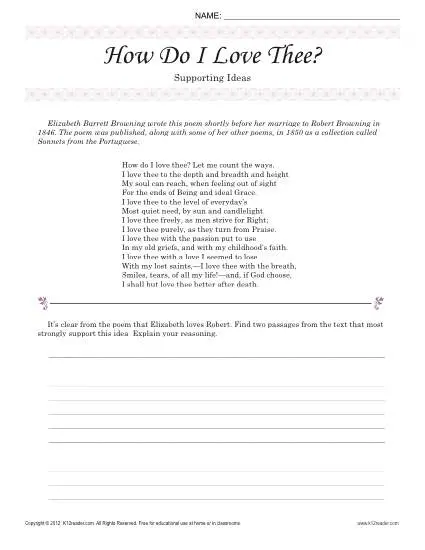



How Do I Love Thee Supporting Ideas 8th Grade Reading Passage Worksheet



Analysis Of Elizabeth Barrett Browning S How Do I Love Thee A Level English Marked By Teachers Com




Pin On Teaching




Spice Up Your English Class With Literary Texts 2nd Eso




Analysis Of Poem How Do I Love Thee By Elizabeth Barrett Browning Owlcation



0 件のコメント:
コメントを投稿